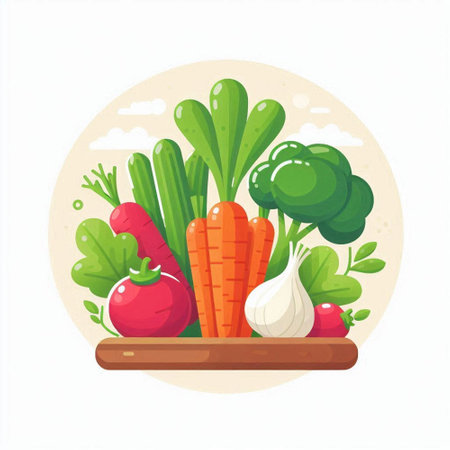The Appeal of DIY Face Masks Using Fruits and Vegetables
In recent years, an increasing number of Americans have started looking to their own kitchens for creative skincare solutions. The trend of using fruits and vegetables in homemade face masks is especially popular among those seeking natural, affordable alternatives to commercial beauty products. There’s a certain charm in mixing up avocado, banana, or cucumber right at home, and the process feels both nostalgic and empowering. Many people are drawn to these DIY recipes because they believe that fresh produce is packed with vitamins, antioxidants, and other nutrients that can benefit the skin. Beyond just being fun and budget-friendly, making your own face masks allows you to control exactly what goes on your skin—free from artificial fragrances, preservatives, or harsh chemicals. This back-to-basics approach resonates with anyone who values clean beauty and enjoys experimenting with natural ingredients found right in their fridge or pantry.
Popular Fruits and Vegetables Used in DIY Masks
When it comes to homemade face masks, certain fruits and vegetables have become go-to ingredients for many skincare enthusiasts across the United States. The appeal lies in their natural nutrients, accessibility at your local grocery store or farmers market, and their reputation for offering gentle care to a variety of skin types. Let’s take a closer look at some of the most popular options and what they are claimed to do for your skin.
| Produce | Main Nutrients | Claimed Skincare Benefits |
|---|---|---|
| Avocado | Healthy fats, Vitamin E, Vitamin C | Deep hydration, soothing dry skin, may support skin barrier |
| Cucumber | Vitamin K, antioxidants, high water content | Cooling effect, reduces puffiness, calms irritation |
| Banana | Potassium, Vitamin B6, Vitamin C | Smooths skin texture, gently moisturizes, softens rough patches |
| Pumpkin | Vitamin A, enzymes, alpha hydroxy acids (AHAs) | Mild exfoliation, brightening effect, helps even skin tone |
| Strawberry | Vitamin C, salicylic acid, antioxidants | Helps with oil control, mild exfoliation, may brighten dull skin |
| Papaya | Papain enzyme, Vitamin A & C | Naturally exfoliates dead skin cells, promotes glowing complexion |
| Aloe Vera (technically a vegetable) | Amino acids, vitamins C & E, minerals | Soothes sunburns and irritation, hydrates without heaviness |
Why These Ingredients?
The popularity of these fruits and vegetables isn’t just about tradition—they’re praised for their naturally occurring vitamins and compounds that address common skincare concerns. For example:
- Avocados: Their creamy texture makes them easy to apply as a mask base while delivering moisture directly to the skin.
- Cucumbers: Because of their high water content and anti-inflammatory properties, cucumber slices have long been used in American spas for eye treatments.
- Bananas: Bananas are often mashed into a paste to deliver quick moisture and nourishment—perfect for those dealing with dry or flaky skin.
Are These Claims Supported?
While these fruits and veggies offer beneficial nutrients when eaten as part of a balanced diet, there is limited scientific evidence backing up all the topical claims made about them. However, many people enjoy using them in DIY masks because they’re generally safe (when patch tested) and make for a fun self-care ritual. As with any skincare ingredient—even natural ones—it’s wise to do a patch test before applying widely on your face.
A Note on Accessibility and Affordability
An added bonus? Most of these produce items are affordable and easy to find year-round in U.S. supermarkets or local farmers markets. This makes DIY face masks an accessible option for anyone looking to experiment with natural skincare at home.

3. Potential Benefits: What Science Says
When it comes to using fruits and vegetables in DIY face masks, you might wonder if their “superfood” status in your diet translates to real benefits for your skin. According to dermatological research, certain nutrients found in fruits and veggies can support skin health, but it’s important to set realistic expectations.
Antioxidants: The Protective Powerhouses
Fruits like blueberries, strawberries, and citrus are rich in antioxidants such as vitamin C and E. Studies show that these antioxidants help neutralize free radicals, which can contribute to premature aging. When applied topically, vitamin C may brighten the complexion and improve the appearance of uneven skin tone—though most studies use stabilized forms of vitamin C found in professional skincare products rather than fresh fruit pulp.
Hydration and Soothing Effects
Cucumbers, avocados, and aloe vera (technically a vegetable!) are famous for their hydrating and soothing properties. Research suggests that these ingredients can provide a cooling effect and temporarily reduce mild irritation or puffiness when used as part of a mask. However, these effects tend to be short-lived compared to results from clinically formulated moisturizers.
Enzymes and Gentle Exfoliation
Papaya and pineapple contain natural enzymes—papain and bromelain—that act as gentle exfoliants. Small-scale studies suggest these enzymes can help remove dead skin cells, leaving your skin feeling smoother. But keep in mind, concentrations in fresh fruit are much lower than those in specialized exfoliating products, so don’t expect dramatic results.
Nutrients Absorption: A Reality Check
It’s worth noting that while vitamins and minerals are essential for healthy skin when eaten, their ability to penetrate the skin barrier during a 10-15 minute mask session is limited. Many dermatologists agree that topical application of raw fruits and vegetables offers some benefits—like hydration or a quick glow—but they’re unlikely to replace targeted skincare treatments prescribed by professionals.
The Bottom Line
DIY masks made from fruits and vegetables can offer a refreshing boost and some temporary improvements thanks to antioxidants, hydration, and natural enzymes. Still, if you’re looking for significant changes or treatment for specific skin concerns like acne or hyperpigmentation, evidence-based products with clinically proven ingredients will likely yield better results.
4. Risks and Considerations
While using fresh fruits and vegetables in DIY face masks can sound like a fun, natural alternative to store-bought skincare products, it’s important to be aware of the potential risks—especially if you have sensitive skin or allergies. Let’s break down some of the most common concerns before you try that avocado or strawberry mask.
Possible Allergic Reactions
Many fruits and vegetables contain proteins, enzymes, or acids that can cause allergic reactions in some people. Even if you don’t usually react when eating these foods, your skin might respond differently when exposed directly. Common signs of an allergy include redness, itching, swelling, or even hives.
| Produce | Common Reaction | Who Should Avoid? |
|---|---|---|
| Strawberries | Rash, redness, swelling | Those with berry allergies or sensitive skin |
| Citrus fruits (lemon, orange) | Irritation, stinging, photosensitivity | Sensitive skin; those prone to eczema |
| Tomato | Redness, burning sensation | People with rosacea or tomato allergy |
| Pineapple | Tingling, mild burns due to enzymes | Sensitive skin types |
Irritation from Natural Acids and Enzymes
Certain fruits like lemons, pineapples, and papayas contain natural acids and enzymes that can exfoliate your skin—but sometimes too aggressively. Overexposure may lead to dryness, peeling, or increased sensitivity to sunlight. If you already use products with active ingredients (like retinoids or AHAs), combining them with fruit acids can worsen irritation.
Other Potential Downsides
- Bacterial contamination: Raw produce isn’t sterile. Bacteria from the skin of fruits and vegetables could transfer onto your face and cause breakouts or infections.
- Staining: Colorful fruits (think beets or berries) may temporarily stain your skin—or your towels!
- Lack of scientific testing: Unlike commercial products, homemade masks aren’t tested for safety or effectiveness.
- No preservatives: DIY masks spoil quickly. Using old mixtures increases risk of irritation.
Bottom Line: Patch Test First!
If you’re excited to try a new fruit or veggie face mask at home, always perform a patch test on a small area of your skin (like behind your ear) first. Wait 24 hours to check for any reaction before applying it to your entire face. And if you have chronic skin conditions—such as eczema, psoriasis, or severe acne—consult with a dermatologist before experimenting with DIY treatments.
5. Best Practices for Safely Using Fruits and Vegetables in DIY Masks
Embracing natural ingredients like fruits and vegetables for your DIY face masks can be fun and beneficial, but its important to approach this trend with care. Here are some best practices to help you get the most out of your homemade masks while minimizing risks.
Preparation: Choose Fresh and Clean Produce
Always start with fresh, organic produce whenever possible. Wash your fruits and vegetables thoroughly to remove pesticides, dirt, and bacteria. Peel or cut away any bruised or damaged spots, as these may harbor unwanted microbes. If youre blending or mashing ingredients, use clean utensils and bowls to prevent contamination.
Patch Testing: Check for Allergic Reactions
Even natural ingredients can trigger sensitivities or allergies, especially on delicate facial skin. Before applying a new mask to your face, perform a patch test by dabbing a small amount of the mixture onto the inside of your wrist or behind your ear. Wait 24 hours to check for redness, itching, or irritation. If you notice any discomfort, skip that ingredient altogether.
Hygiene: Practice Safe Application and Storage
- Hands: Always wash your hands before preparing or applying a mask.
- Tools: Sanitize blenders, bowls, and brushes before use.
- Single Use: Apply the mask immediately after preparation and discard leftovers; fresh produce spoils quickly and can breed bacteria.
Tip:
If you need to store a mask briefly, refrigerate it in a sealed container for no longer than 24 hours.
Enhancing Results: Combine Wisely
Certain fruits and vegetables pair well together for targeted benefits—think avocado (hydrating) with honey (soothing), or cucumber (cooling) with yogurt (gentle exfoliation). Avoid combining too many acidic ingredients like lemon or pineapple at once, as they can irritate sensitive skin.
Pro Advice:
If you have chronic skin conditions such as eczema or rosacea, consult a dermatologist before experimenting with DIY skincare trends. Safety first—your skin will thank you!
6. DIY vs. Store-Bought Masks: What’s Better for You?
When it comes to choosing between homemade face masks made with fruits and vegetables and store-bought options, there are several factors to consider—especially if you’re living a fast-paced American lifestyle. Let’s break down the key differences in terms of safety, effectiveness, and convenience so you can make the best decision for your skincare routine.
Safety: Natural Isn’t Always Risk-Free
DIY masks using fresh produce might sound wholesome, but they aren’t automatically safer than commercial products. Certain fruits and vegetables can cause allergic reactions, irritation, or even photosensitivity (like citrus fruits). Without proper knowledge of how ingredients interact with your skin, you could unintentionally harm your complexion. Store-bought masks, on the other hand, are formulated and tested for safety on various skin types, meeting FDA guidelines. They also include preservatives that prevent bacterial growth—something homemade masks lack.
Effectiveness: Science vs. Simplicity
While DIY masks can offer some benefits from vitamins and antioxidants found in natural ingredients, their results may be limited. Commercially available masks often contain concentrated extracts and scientifically-backed active ingredients designed to target specific skin concerns like acne, dryness, or aging. The manufacturing process ensures consistent potency and absorption—something hard to guarantee with kitchen-made blends.
Convenience: Time and Lifestyle Considerations
For many Americans balancing work, family, and social commitments, convenience is key. Store-bought masks win here—you simply open the package and apply. DIY masks require time to shop for ingredients, prepare mixtures, and clean up afterward. Plus, homemade blends have a short shelf life and need to be used immediately to avoid spoilage.
Which Should You Choose?
If you enjoy experimenting in the kitchen and have sensitive skin that reacts well to simple ingredients, a DIY approach could be fun for occasional use. But if you value predictability, efficiency, and clinically-proven results—especially when juggling a busy schedule—a store-bought mask may suit your lifestyle better.
Bottom Line
No matter which option you choose, always patch-test new products or ingredients before full application. Listen to your skin’s needs and don’t hesitate to consult a dermatologist for personalized advice.


